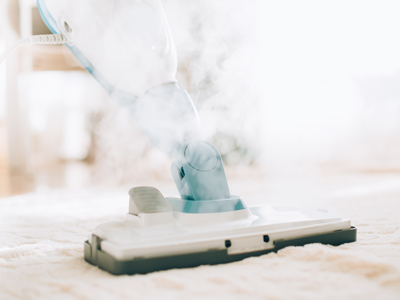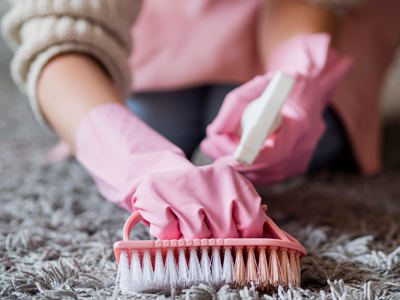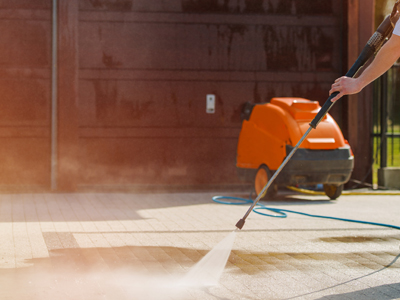Cleaning Tips
There are several options for cleaning rubber flooring. However, the first step is always to remove the loose dust, dirt, and debris. This can be done by sweeping, vacuuming, or using a leaf blower.

Steam Cleaning
Steam cleaning is the best way to clean rubber flooring. Steam cleaning naturally disinfects and refreshes the rubber without the use of harsh chemicals. This method also dries quickly, helping to eliminate water spots. Smaller areas can be cleaned with a residential steam mop. For larger areas you may want to rent or purchase a larger commercial size steam cleaner.

Damp Mopping / Scrubbing
Damp mopping/scrubbing is the most common method. For best results, use a stiff bristled scrub brush on a handle rather than a mop, which often leaves behind fuzz or debris.
When damp mopping/scrubbing, use distilled white vinegar at least once or twice a week for the first six weeks. This will clean and disinfect the floor as well as help dissipate the rubber smell. Cleaning with warm vinegar or other liquid solution is more effective.
After six weeks you can switch to an all-natural citrus based cleaner. A lemon or orange concentrated cleaner works very well.
Most importantly, stay away from any cleaning products that contain petroleum or bleach or are waxed based. Petroleum/bleach cleaners will dry out and eat away at the rubber over time. Waxed based cleaners will leave behind a slippery residue that can become a safety hazard.
As with any cleaner, you should always clean a small spot first to see how the cleaner will react with the rubber.
Water spots are the biggest issue when cleaning rubber flooring. Water spots can form if you do not dry the flooring quickly, similar to washing a black car. For this reason, damp mopping/scrubbing should be done in small sections. Clean a section, squeegee off the excess water, and use a fan to help dry the section quickly.

Pressure Washing
Pressure washing is the easiest way clean a floor. Simply pressure wash the floor, squeegee off excess water, and set up fans to dry it quickly.